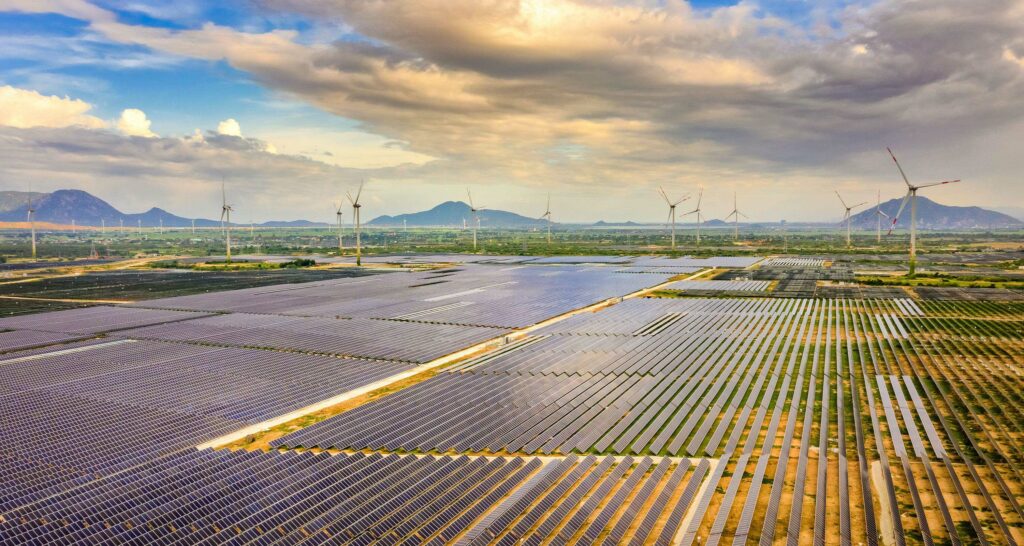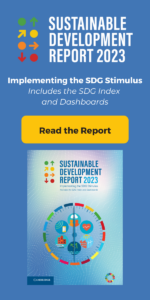Ramping up renewable energy
This Decade of Action demands a decisive shift from polluting to renewable energy. We need robust political, economic, and technological levers and deeper sectoral collaboration if we’re to bring clean power to all
Energy — Global

The Paris Agreement calls for the world to limit temperature rise to no more than 2°C above pre-industrial levels, and to pursue efforts to cap it at 1.5°C. To achieve this goal, global investment and deployment in renewable energy must accelerate. Installations of wind turbines and solar photovoltaic (PV) cells must far exceed current levels for all major emitting countries. For example, if the US is to meet its 2050 carbon-neutrality target, it will need to increase the deployment rate of wind and solar PV by between 10 and 40 times compared with current levels. For China to achieve its target of hitting peak carbon emissions by 2030, wind and solar PV installations would need to top 1,200 GW in 2030. That would be more than the current capacity of wind and solar PV installations globally, and would exceed the current total installed electricity capacity in the US.
To achieve such a challenging target at a global level, international cooperation must be strengthened in three areas. We must:
- Strengthen cooperation in the global renewables supply chain, to continue to reduce renewable energy costs.
- Introduce a carbon price, through market mechanisms, to further improve the competitiveness of renewable energy relative to fossil fuels.
- Strengthen the research, development and construction of energy storage technologies worldwide to support high penetration of renewables.
Reducing barriers
Renewable energy generation now accounts for around 30% of global electricity generation. The rapid growth of renewables has been driven by the substantial decline in generation costs in recent years. The cost of PV has fallen by 82% and concentrating solar power (CSP) by 47% in the last decade, while the cost of onshore and offshore wind has fallen by 39% and 29% respectively. The lower costs of onshore wind and PV compared with fossil power plants in most regions have made them the competitive choice for new power generation units. In most countries, onshore wind and PV can already compete with fossil energy without government subsidies.
However, in some developing countries, the development and deployment of renewable energy still faces significant barriers. These include:
- high costs of financing
- lack of incentive policies
- insufficient capital availability
- fragile grids
- lack of technical knowledge on renewable energy
- exchange rate risks
Addressing these barriers will require a different mix of policies, but the key remains to further cut the cost and increase the ease of access to renewable energy. The world must reduce green trade barriers to renewable energy technologies. It must further accelerate the reduction of renewable energy costs through global cooperation along the supply chain, and through economies of scale. This cost reduction will not only benefit wind turbine and PV module-producing countries like China. It will also help those countries where renewable energy generation equipment is installed, as most employment and local benefits occur during installation, operation, and maintenance.
In addition, global North-South-South (trilateral) cooperation in renewable energy should be strengthened. This will accelerate the uptake of renewable energy in developing countries through technology and knowledge transfer. It will also facilitate the accelerated deployment of renewables in those countries through financial, technological, and capacity-building support.
Economic levers
At the same time, to make room for the accelerated development of renewables, the global installed capacity of fossil energy generation needs to be phased out. To this end, a pricing policy for carbon emissions is an effective policy tool that can be used at global scale. A recent study by the World Bank shows that many countries have already implemented carbon pricing policies through the establishment of carbon taxes or emission trading schemes (ETS).
The introduction of a carbon price could further increase the competitiveness of renewable energy generation. In the short term, the carbon price will increase the cost of electricity from fossil sources and therefore more electricity from renewable sources will be dispatched in the electricity market. In the long term, the carbon price will give investors more incentives to invest in renewable energy sources due to the increased profitability of renewable energy generation, further increasing the share of renewable energy generation.
However, it is also important to note that some countries do not have competition in the electricity generation sector. Introducing a carbon price therefore may not have an impact on the dispatch of electricity. There may also be a lack of mechanisms to pass the carbon price through to the electricity price. Carbon pricing policies therefore need to be implemented in conjunction with other policies that liberalize and introduce market competition in the electricity sector to promote the development and deployment of renewable energy generation.
Technical challenges
Achieving a future energy system with a high penetration of renewables also means having to solve a number of technical challenges. In particular, we need to reduce curtailment (capping renewable energy production at those times when supply exceeds demand) and overcome intermittency. The overall rate of electricity curtailment shows a positive correlation with renewable energy penetration. For every 1% increase in renewables penetration, the average increase in the curtailment rate is between 0.02% and 2.97%. In addition, the power generation from renewable energy sources is affected by incoming wind and sunlight conditions and cannot be kept stable at all times. Solving this requires other technologies to regulate supply, incurring integration costs.
Energy storage technologies and smart grids offer solutions for future energy systems based on renewables. Existing storage technologies include short-term options (such as batteries) that can provide day-level capacity, and long-term options (such as compressed air storage), which can provide grid-level capacity. However, energy storage technologies currently face challenges such as cost and safety. Also, energy storage technologies are essentially energy conversion technologies that can also convert renewable energy into heat, hydrogen, and liquids for storage.
Energy storage, particularly batteries, has made huge technological advances over the last decade, with costs falling significantly. In the future, further collaborative research and development and industry cooperation can push costs down further and faster, boosting large-scale deployment of renewable energy storage. This will create the conditions for the further development of renewable energy.







